So. Our story begins with two twin brothers: Jarosław Kaczyński and his twin brother Lech.
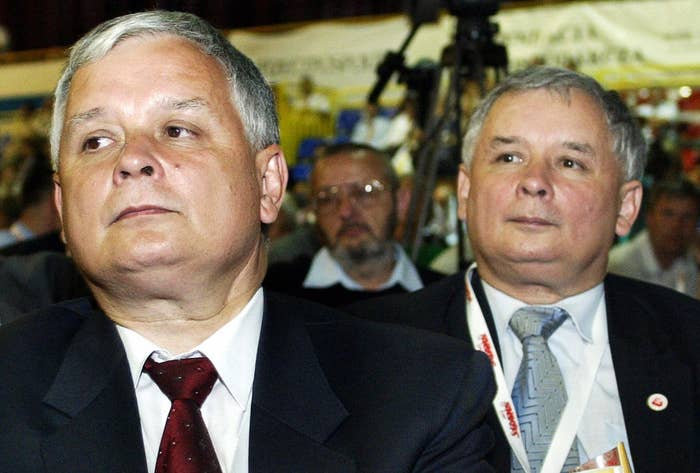
They were former child stars, who had appeared in a 1962 film called The Two who Stole the Moon.
View this video on YouTube
They had founded the national-conservative party Law and Justice in 2001, and in 2005 they came to power. They held the most important political positions in the country: Jarosław was the prime minister, and Lech was the president.
But the party was ruling in a coalition, and it wasn't working all that well. Gaffe followed gaffe followed gaffe, and by 2007 it was in opposition.
1. For example, that year, a member of the government demanded that Teletubbies should be banned from TV. The MP argued that Tinky Winky was gay, because he had a handbag…
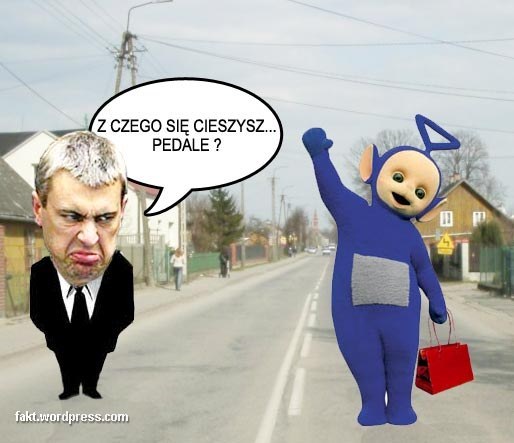
On 10 April 2010, Lech Kaczyński died in a plane crash in Smoleńsk when the pilots were pressured to land in adverse conditions.
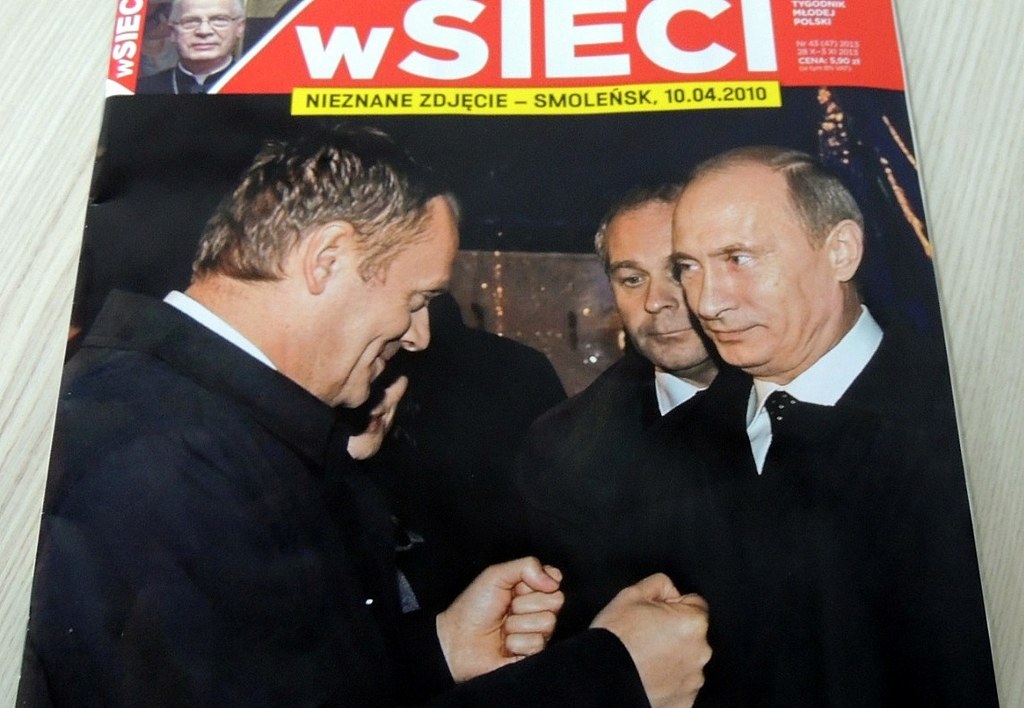
Conspiracy theories regarding the death spread around Poland. The above picture circulated among the Polish right as proof that the crash was a Russian plot, carried out with the cooperation of prime minister Donald Tusk.
Amid rising anti-Russian sentiment among Polish nationalists, Jarosław Kaczyński also suggested his brother's death was an assassination, and refused to accept an official report on the accident.
2. From now on, for Jarosław Kaczyński, everything was Tusk's fault. This became a hot meme:
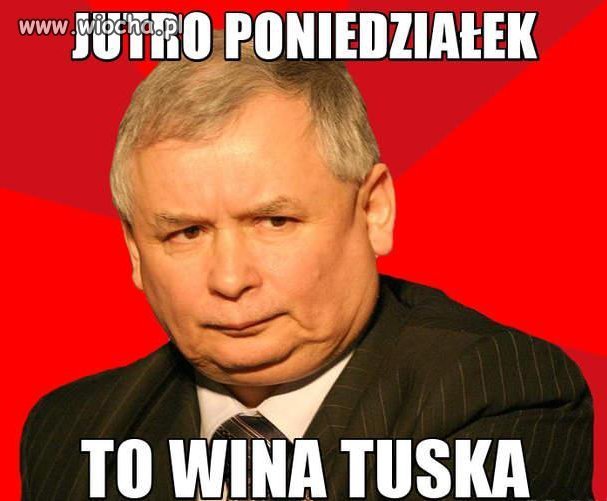

Including allegations of vote rigging:
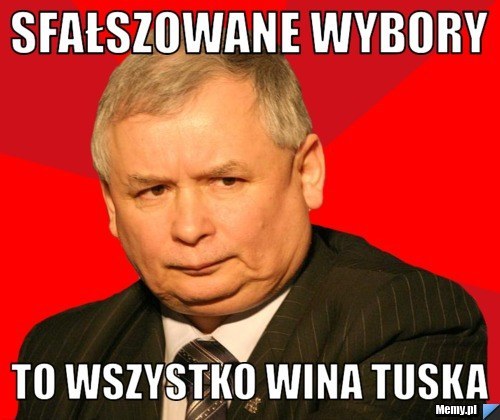
3. Law and Justice established an independent commission in order to "find the truth about Smoleńsk". It was lead by an MP named Antoni Macierewicz, and refuted by experts.

His conspiracy theories became legendary: One was that the Russians had created a helium bubble in order to reduce lifting force on one side of the plane, along with their spreading artificial fog, planting a bomb that caused the explosion after the plane landed, and so on...
4. Which meant this meme became huge...
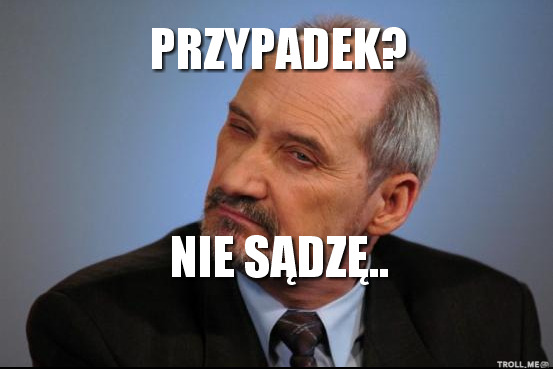

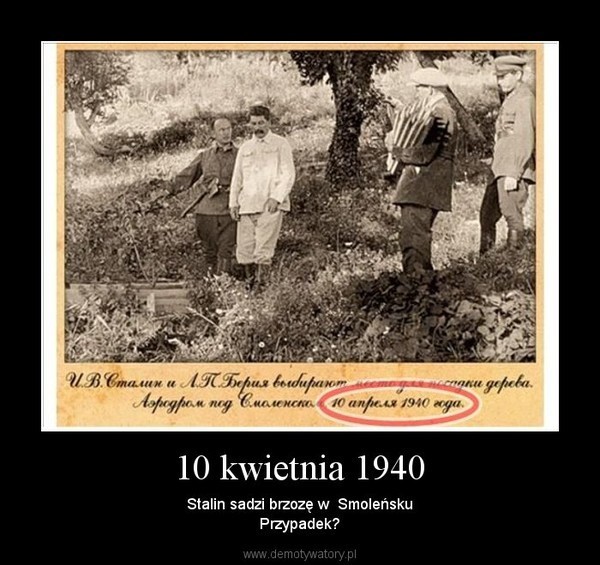
5. For eight years, Civic Platform ran the country. Poland came through the global financial crisis relatively unscathed, and the public forgot about Smoleńsk, despite Kaczyński's attempts to bring it back to the public's attention.
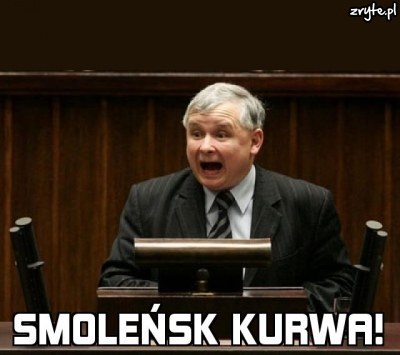
6. Kaczyński realised that they wouldn't be able to gather any more support if they based their party around one agenda only, so the issue of Smoleńsk and politicians like Macierewicz (along with Kaczyński himself) were replaced by fresh blood.
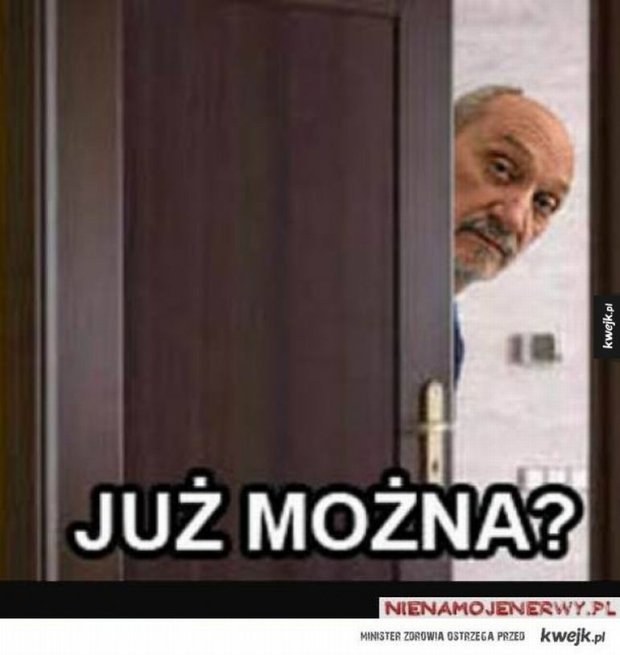
7. It worked. In May this year the relatively unknown Andrzej Duda became president – even Kaczyński himself seemed surprised.

8. Duda was popular not just among young Poles, but also became almost a saint among elderly people, who even wrote songs to praise him:
View this video on YouTube
9. Kaczyński decided to try the same trick in the parliamentary election. His new prime ministerial candidate travelled across Poland, trying to convince people that the country was in ruins. The internet didn't agree:



10. Kaczyński also played on Polish fears to orchestrate a rebirth of nationalism on the right, as captured by popular cartoonist Marek Raczkowski here.
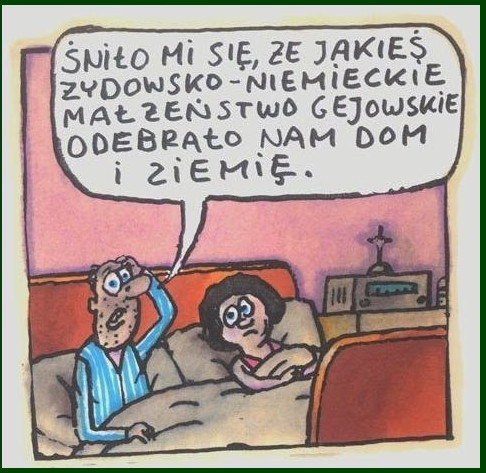
11. The propaganda tried to change voters' perception of history, exaggerating the participation of Kaczyński in recent historical events, and smearing prominent historical names like Lech Wałęsa.
View this video on YouTube
This song is an attempt to mock the right wing's version of the past.
12. Much of the campaign aimed to attack the Civic Platform government: The fact that its leader and prime minister Donald Tusk was elected as president of the European Council was used to show Poland in a bad light:
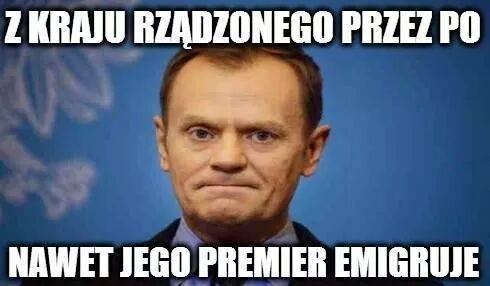
But once the right-wing propaganda got going, it was only ever going to snowball.
For some Poles Law and Justice was not radical enough. A man named Janusz Korwin-Mikke began to build up a following.
This was a guy about whom Nigel Farage had once said "I am happy that there is someone compared to whom I can look like a pretty moderate politician."
He had previously claimed Hitler was probably not aware that Jews were being exterminated, that women should not have the vote, and had used the n-word to describe black people.
For 25 years he had participated in Polish elections, and now it seemed he was finally going to make it over the 5% threshold required in the elections.
13. Or was he?
His campaign was hit by allegations of plagiarism from anti-Polish leaflets used by the German far-right movement.

The first exit polls suggested he was just 0.1% below the threshold. There was still hope…
14.
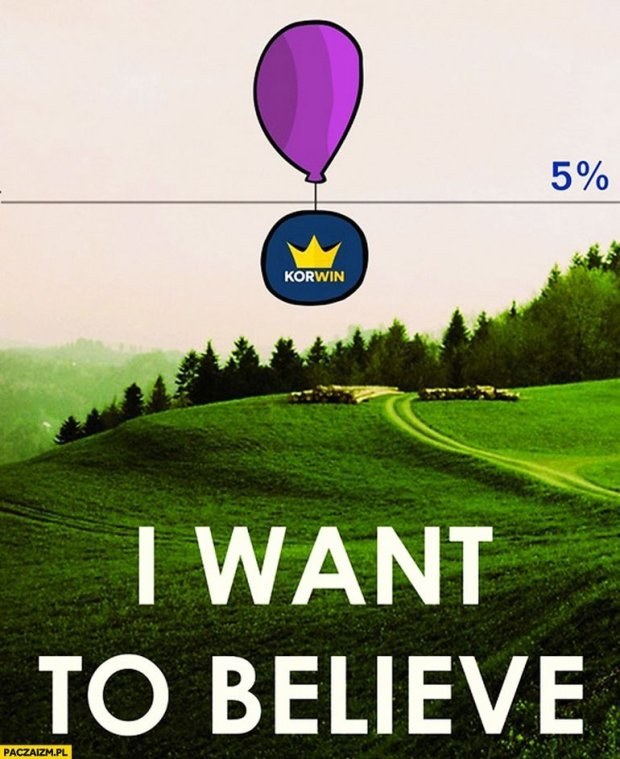
...but he was counting on delayed votes from Polish citizens voting abroad…
15.
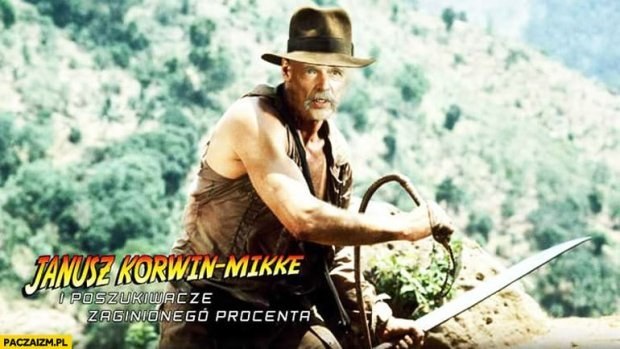
In the end, it wasn't enough to get him over the line.
16. However, there was yet another anti-establishment movement. Paweł Kukiz, a singer and activist, refused to give away any of his plans, claiming that party manifestos were just a bunch of lies.

It turned out to be enough to get him 8% of votes. As he once sang, "In this country, anything can happen."
View this video on YouTube
:
17. And that meant he managed to get some of his pals from the musical scene into parliament. The most interesting MP seems to be Liroy, a rapper well-known for his colourful language.

And what about the left? In the presidential elections the main party, the Alliance of Democratic Left, led by the old hands from the communist era, tried the same trick as Law and Justice, putting forward a fresh face in 35-year-old Magdalena Ogorek.
However, she didn't fare well, and blamed sexism for this. But her party came to a different conclusion as to the reasons for her failure.
18. When they searched for a new face for the parliamentary elections, they picked another woman, who they felt wouldn't be used as a target for "stupid blonde" jokes like...
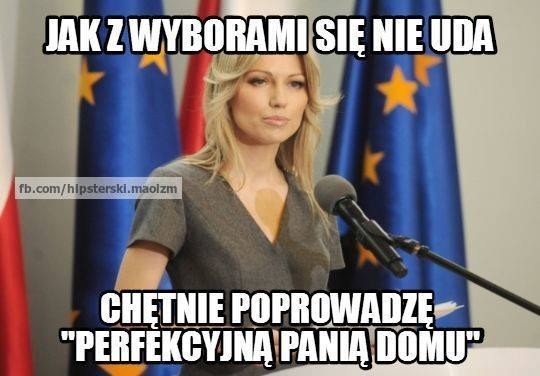
19. It seemed the left was doomed, but days before polling they suddenly had a question to answer:

By law, representatives of all parties had to be included in the TV debates. The media was suddenly very excited about a newly created grass-roots, social-democratic party created from scratch by the young people. One of its leaders, Adrian Zandberg, became a star out of nowhere.
His party didn't make it into parliament, but by scoring over 3% they secured some funding from the state budget, which for a party without major figures, created from scratch in a matter of just a few months, was a great success.
20. The Alliance of the Democratic Left didn't make it over the threshold. They blamed Zandberg's party for stealing their votes.
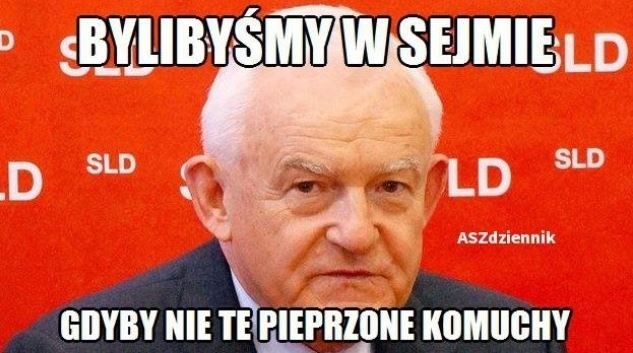
21. So what about the winners? Law and Justice stormed to victory, allowing them to create a majority government. This time accusations about elections being rigged were conspicuous by their absence.
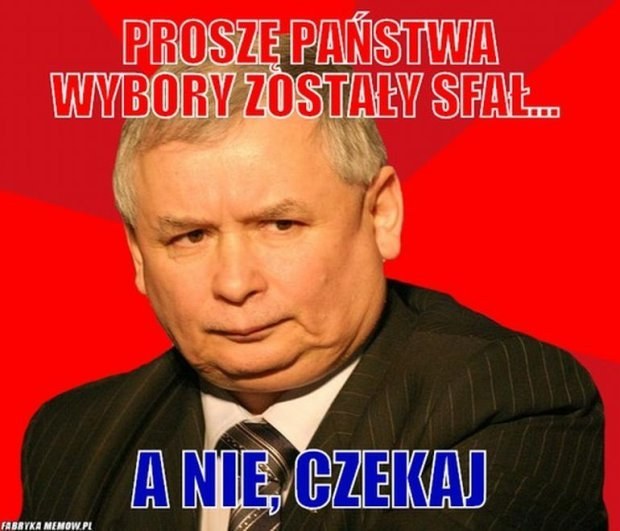
22. Kaczyński became the most powerful person in Poland. The internet had a pretty clear opinion on who'd be in his government, which was to be led by 52-year-old Beata Szydło:
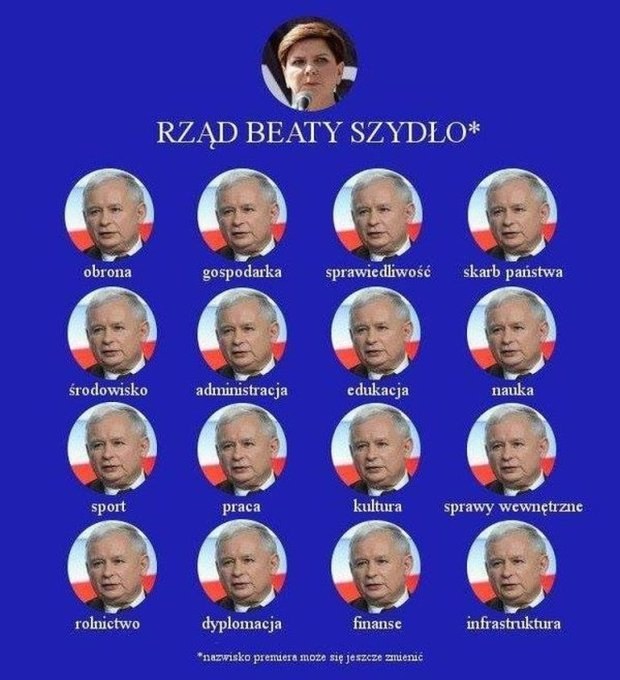
23. We might see the return of some old faces (remember this guy?)

He is highly memeable.
Anyway, Law and Justice says that now is the time of big changes and a big reconstruction of Poland. Their project of constitution hints that they aim at some crossover between Orban's Hungary, Putin's Russia, and a Catholic version of Iran.
24. Law and Justice plans to make huge reforms. Already the internet is getting concerned over how much Catholic powers will hold sway.
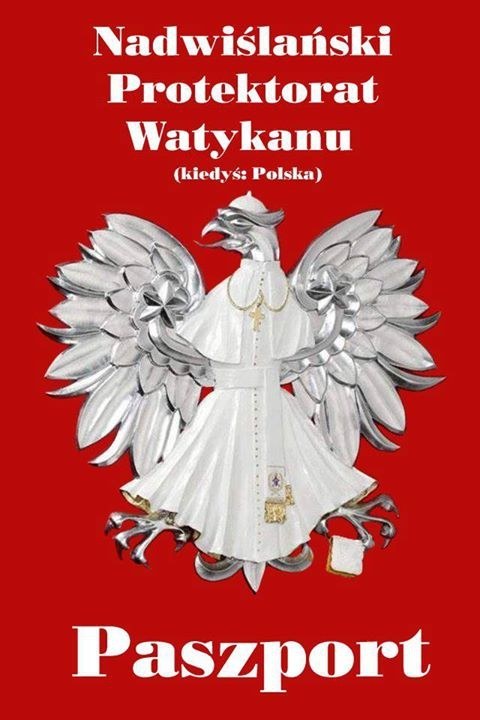
25. People are posting about their plans to emigrate.
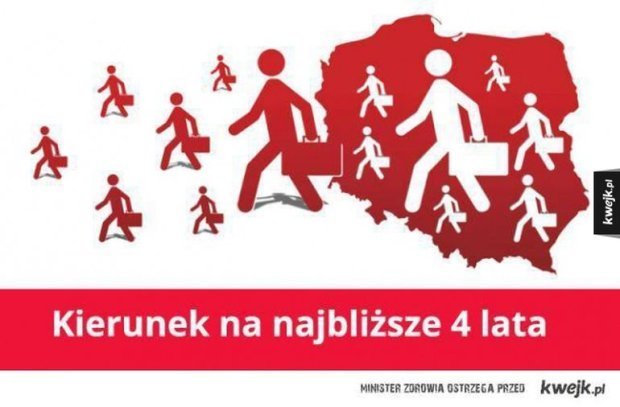
26. President Tusk doesn't seem too happy.
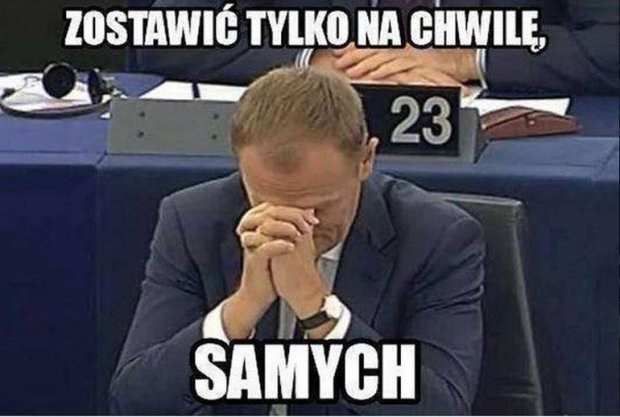
27. Another cartoon by Marek Raczkowski has become very popular online.
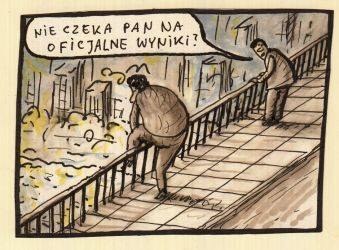
28. But at least they all know who to blame.
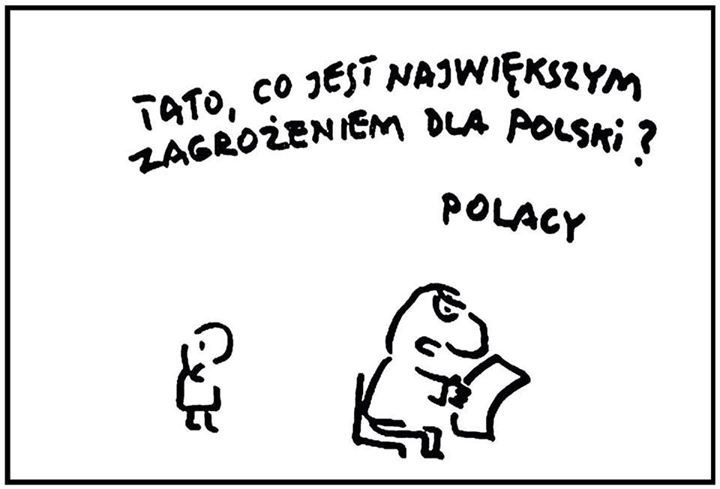
Dad, what is the biggest threat to Poland?Poles.





